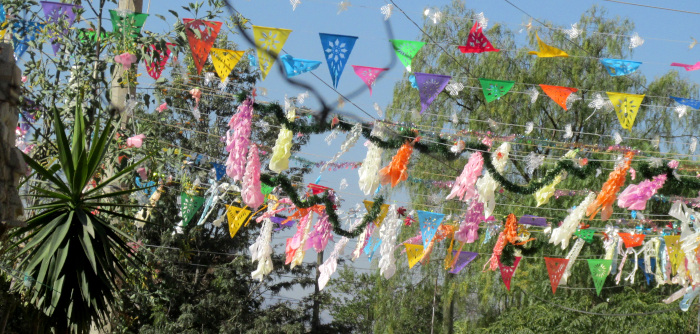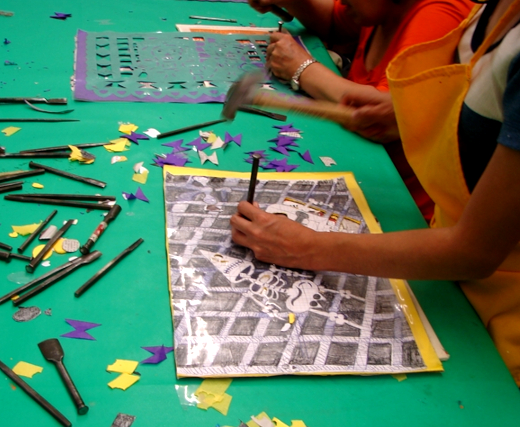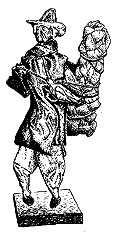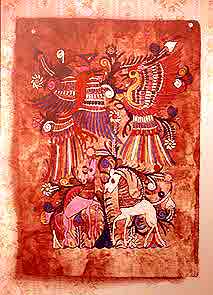
Often Mexican streets are graced with colorful banners and streamers as shown above. The triangular ones with holes in them are forms of papel picado, or papel chinacalado. The latter name indicates the art's supposed origin, in China, from back when Spanish bergantines arrived in Alcapulco with Asian goods. Nowadays, many such decorations aren't paper but plastic, but still may be made in China.
 Making papel picado at a workshop at the Museum of Popular Art; image courtesy of Museum of Popular Art in Mexico City
Making papel picado at a workshop at the Museum of Popular Art; image courtesy of Museum of Popular Art in Mexico CityTypical designs portray plant and animal motifs, and expressions such as Viva México. Mexicans hang the cut paper along wires or strings as decorations during fiestas, and sometimes they are incorporated onto piñatas.
Occasionally beneath a stall's exposition of papel picado the artist is found sitting, scissors in hand, patiently at work; frequently the artists are old men. Specific localities famed for their papel picado include Huaquechula, San Salvador, and Huixcolotla, all in Puebla. The art is also produced in Jalisco, Michoacán, and the Federal District.
 Teaching papel picado in the pasillo de artesanías in Atlixco, Puebla, México;
Teaching papel picado in the pasillo de artesanías in Atlixco, Puebla, México;image courtesy of Italia Ugalde via Wikimedia Commons

In central Mexico sometimes you can find figures of animals, people, and other items artfully fashioned from paper, such as the man at the left.

Especially in Cuernavaca, painted papel de amate such as that pictured at the right, has become a tourist staple. This is the inner bark of the American fig-tree painted with colorful fanciful designs. You you have heard of the "books" or codices produced by Mexico's dominant ancient peoples. These were generally long strips of papel de amate folded zigzag into a book. They did not have their pages bound at the edges, as do today's books. The painted, picturelike sheets of papel de amate that today are important tourist acquisitions, especially in Cuernavaca, are based on works that in the old days were used mainly for magical and religious purposes.